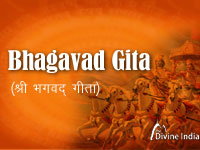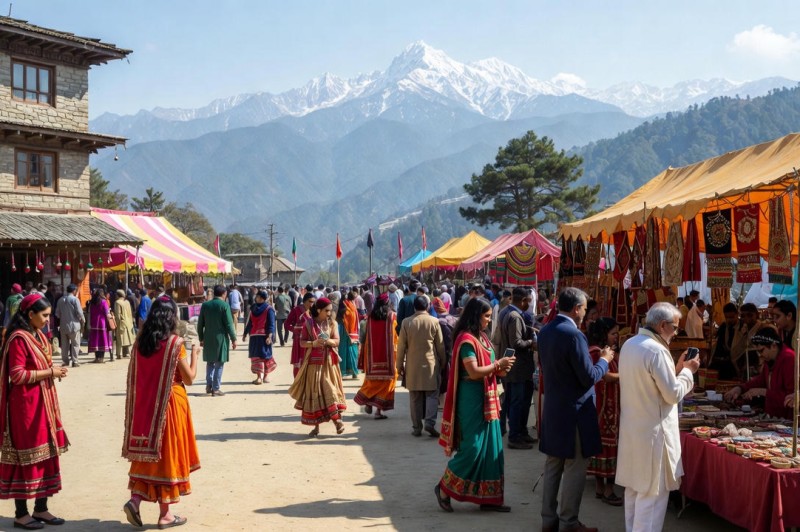

Dinamapi rajanī sāyaṁ prāta: Śiśiravasantaurāyāta: .
Kāla: Krīḍati gacchyāyustadpi na mun̄catyāśāvāyu:..1.
Bhaja gōvindaṁ bhaja gōvindaṁ bhaja gōvindaṁ mūṛhamatē.
Prāptē sannihitē maraṇē nahī rakṣi ḍukr̥ṣṇ karaṇē. (Dhruvapadma)
agrē hēnni: Pr̥ṣṭhē bhānū rātau cibukasamarpitajānu: .
Karatālabhikṣā tarutalavāsastadpi na mun̄catyāśāpāśa: .Bhaja. ..2..
Yāvadvitōpārjanasaktastāvannijaparivārō rakta: .
Paścād'dhāvati jararadēhē vārtāṁ pr̥cchati kō̕pi na gēhē. Bhaja. ..3..
Jaṭilō muṇḍī luñcitakēśa: Kāṣāyāmbarabahukr̥tavēṣa: .
Paśyanpi ca na paśyati lōkō hmudara nimittaṁ bahukr̥taśōka: . Bhaja. ..4..
Bhagavadgītā kiñcidhitā gaṅgājalalavakaṇikāpītā.
Sakraddi hā murārisamarcā tasya yama: Kiṁ kurutē carcām. Bhaja. ..5..
Agaṁ galitaṁ palitaṁ muṇḍaṁ daśanavihīna jātaṁ tuṇḍam.
Vr̥d'dhō yāti gr̥hītvā daṇḍaṁ tadapi na mucatyāśā piṇḍam. Bhaja. ..6..
Bālastāvatkrīḍā saktastaruṇastāvattaruṇīrakta: .
Vr̥d'dhastāvaccintāmagna: Pārē brahmāṇi kō̕pi na lagna: . Bhaja. ..7..
Punarapi janana punarapi marānā punarapi jananījaṭharē śayanam.
Iha sacē khalu dustārē kr̥payā pāhi murārē. Bhaja. ..8..
Punarapi rajanī punarapi divasa: Punarapi pakṣa: Punarapi māsa: .
Punapyāyanaṁ punarapi varṣaṁ tadapi na muñcatyāśāmarṣam. Bhaja. ..9..
Vayasi gatē ka: Kāmavikāra: Śuṣka nīrē ka: Kāsāra: .
Naṣṭē dravyē ka: Parivārō jñātē tatvē ka: Viśva: . Bhaja. ..10..
Nārīstanabharanābhinivēśaṁ mithyāmāyāmōhāvēśam.
Ētanmānsavasādivikāraṁ manasi vicārāya bārambāram. Bhaja. ..11..
Kastvaṁ kō̕haṁ kuta āyāta: Kā mē jananī kōmē karatāta: .
Iti paribhāvaya sarvamasāraṁ viśvaṁ tyaktvā svapnavicāram. Bhaja. ..12..
Gēyaṁ gītānāmasahastraṁ dhyēyaṁ śrīpatirūpamajastram.
Nēyaṁ sajjanasaṅgē cittaṁ dēyaṁ dīnajanāya ca vittam. Bhaja. ..13..
Yāvajjīvō nivasati dēhē kuśalaṁ tāvatpracchati gēhē.
Gatavati vāyau dēhāpāyē bharyā bibhyati tasminkāyē. Bhaja. ..14..
Sukhāta: Kriyatē rāmābhōga: Paścād'dhānta śarīrē rōga: .
Jarī lōkē maraṇē śaraṇa tadapi na mun̄cati pāpācaraṇam. Bhaja. ..15..
Rathyācarpaṭaviracitakantha: Darjāpuṇyavivarjitapantha: .
Nāhaṁ na tvaṁ nāyaṁ lōkastadapi kimarthaṁ kriyatē śōka: . Bhaja. ..16..
Kurutē gaṅgāsāgaragamanaṁ vrataparipālanamathavā dānam.
Jñānavihīna: Sarvamatēna muktiṁ na bhajati janmatēna. Bhaja. ..17..
The "Charpat Panjarika Stotram" is a Sanskrit hymn composed by the renowned Indian philosopher and saint, Adi Shankaracharya. This stotra, is also known as the "Song of the Bird's Cage" or "The Hymn of the Madman."
The title "Charpat Panjarika Stotram" can be roughly translated to mean "The Hymn of the Bird That Escaped from the Cage." This metaphorical title symbolizes the longing of the individual soul (jiva) for liberation (moksha) from the cage of worldly desires and attachments.
The stotra is a philosophical and devotional composition that explores themes related to Advaita Vedanta, the non-dualistic school of Hindu philosophy associated with Adi Shankaracharya. It emphasizes the impermanence of the material world, the futility of worldly pursuits, and the ultimate reality of the self (atman) as one with the universal consciousness (Brahman).
The Charpat Panjarika Stotram encourages individuals to detach from the transient pleasures of the material world and seek self-realization through spiritual wisdom and contemplation. It serves as a reminder of the transient nature of life and the importance of seeking inner peace and liberation.
Devotees and scholars interested in exploring the depth of Advaita Vedanta philosophy often study and recite this stotra as a means of reflection and spiritual practice. The verses of the stotra are rich in symbolism and philosophy, making it a profound and revered text in Hindu spirituality.